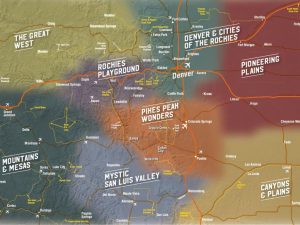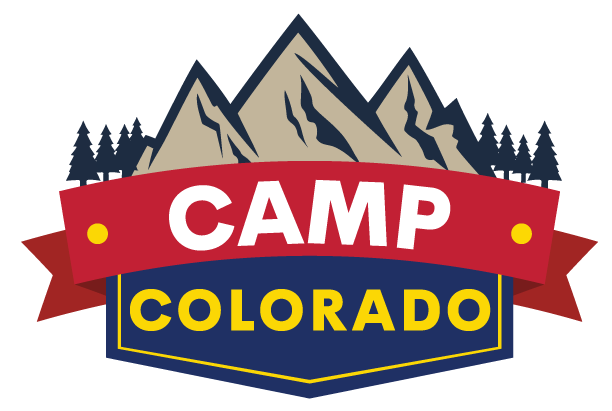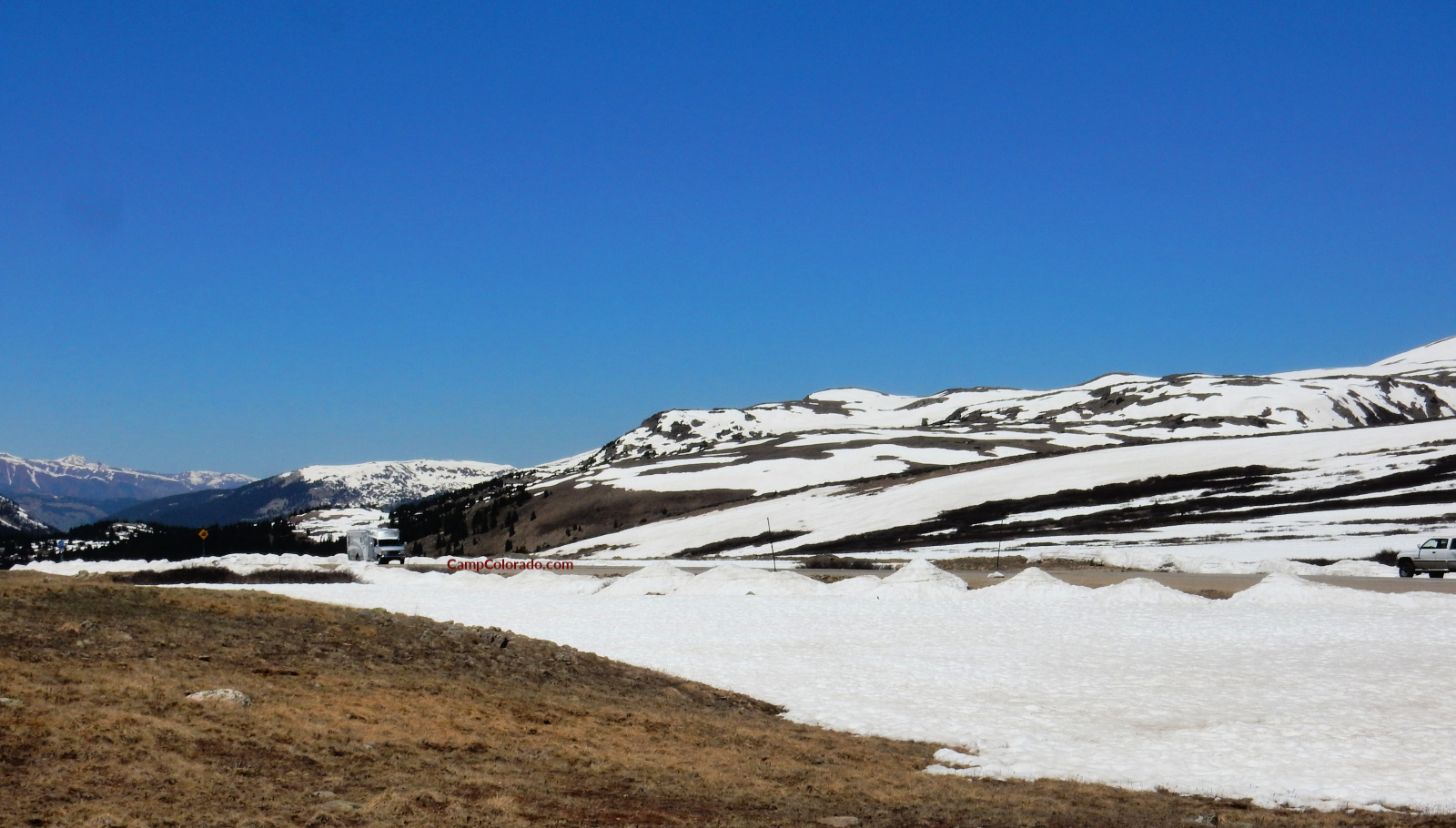In an earlier blog post, we introduced the eight regions of Colorado. Now let’s dive more deeply into each region (when we’re finished with each we’ll link them to one another).
Let’s go to the area known as the Rockies Playground region (shown rather centrally and in purple on our map). It’s majestic!

8 Tourism regions of Colorado (as shown by the Colorado Tourism Office)
Leadville, Vail, Aspen, Breckenridge, Fairplay are some communities you’ll find in this region. The region fades into the Great West region near Glenwood Springs, and to the east it blends into Denver & Cities of the Rockies region near Golden.
This central Colorado region is one that campers from around the globe flock to experience. It’s also near the majority of Colorado’s population, and it’s convenient to the travelers who arrive by plane into Denver International Airport.
Colorado songs, stories and scenes flood one’s mind when visiting this region! They’re truly world renowned … so the area is wildly popular and highly sought! (Therefore, we strongly recommend you book early!)

RV in the scene at Independence Pass
In the heat of summer, where the regions of the Canyons & Plains and the Pioneering Plains can see temps above 100°F, and the Denver & Cities of the Rockies region climbs into the 90°Fs, travelers to the Rockies Playground will still want to pack a blanket, a jacket and long pants. Even if the daytime highs are comfortable, the night time lows will make you happy to have those additional items!
By the way, notice the snow. This was taken at Independence Pass, one mid-June day. That’s on the Continental Divide, up at 12,095′. The 32-mile pass between Aspen and Twin Lakes is generally open from Memorial Day until late October or early November.
An RVing word of caution: CO-DOT says this about Independence Pass, “Absolutely no vehicles over 35 feet in length may use the Pass at any time,” and we know many RVers who say they wouldn’t do it in even a 30′ RV.
You’ll find amazing scenery throughout the region, and it changes with the moving sun. Amateur and professional photographers will be clicking away non-stop!
As for wildlife, it’s possible you’ll spot mountain goats, foxes, chipmunks, and pine martens. While moose are more common further north, it’s slightly possible to spot them in this region. Yet elk, now that’s much more common in this region. Oh, and bighorn sheep ~ yes, they’re usually high on the list for travelers, so here’s a PDF to assist you.
Please always remember, we (you and me) are the visitors! This is their territory. Please don’t tempt, tease, feed or approach wildlife!
There’s more! Stargazing is phenomenal since you’re looking at them from thousands of feet closer than most places in our country. In this region you’ll also have considerably less light pollution (community lights are minimal).
Those who enjoy festivals (click for ideas) will find plenty through the year.
In between the majestic peaks of this region, you’ll find mining towns, museums, and mountain towns.
The rivers and streams provide rafting and fishing opportunities.
Hiking and mountain biking enthusiasts love this region.
When you’re done exploring, you’ll probably be able to find some wonderful nightlife, special microbreweries, and delicious cuisine.
Caution: we need to warn you that altitude sickness is a real thing! It’s easy to avoid, but it’s truly genuine, so please read our notes on how to avoid it. Plan accordingly, heed the warnings, and you’ll do much better than if you don’t!
Words of Wisdom:
- Due to the early onset of winter, and its late departure, most campgrounds in this region have a shorter season.
- Those who book early have the best chance of finding campsite availability, especially for summer weekends and holidays.
- There are limited roadways compared to the eastern USA, so plan for this. Most everyone uses I-70, so traffic congestion can be an issue (especially Friday and Sunday evenings).
- The weather in this stretch can change in a matter of moments, which can impact travel time. Although I-70 is an interstate, you aren’t going to see the same speed limits here as you’ll see on the Pioneering Plains and other regions (if conditions allow you to drive even the limit).
- Regardless of the time of day and time of year, be sure to monitor conditions on COtrip for the current road conditions. Construction, avalanche control, snow, ice, rain … Colorado can see all of it even in one day!
So, where should you camp in colorful Colorado? It depends on the month of your trip and your camping preferences from what amenities you desire to your means of lodging (tent, RV, cabin, yurt, lodge, tepee, covered wagon, glamping safari tent, or any other means of enjoying the outdoors). Since there are many other factors to consider, we created our CampColorado to help you find a campground that suits your desires. The search page offers a range of options, and many listings provide in-depth descriptions.
The Colorado Tourism Office provides additional travel ideas in the regions in this post.
This publication is supported by funding from the Colorado Tourism Office, a state agency. Turn to Colorado.com for a comprehensive list of festivals, events, historic areas, itineraries, and community insight.





